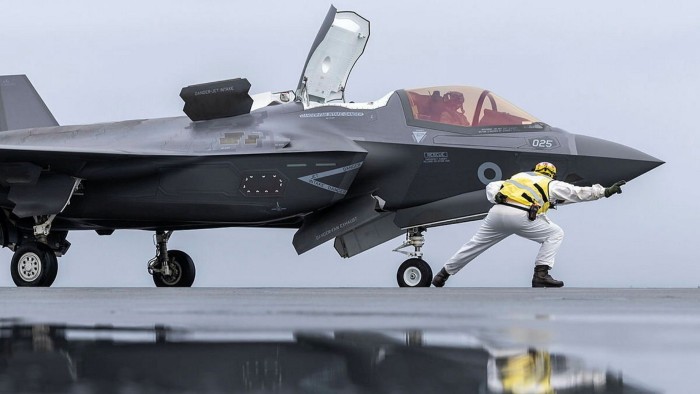Unlock the Editor’s Digest for free
Roula Khalaf, Editor of the FT, selects her favourite stories in this weekly newsletter.
Britain’s public spending watchdog has warned of “shortcomings” in the country’s F-35 fighter jet programme, with delays, low pilot flying hours and personnel shortages undermining the fleet’s effectiveness.
The 37-strong fleet last year met only one-third of the Ministry of Defence’s target to perform all required missions, the National Audit Office said on Friday.
Plans to equip the aircraft with important weapons, including UK-developed missiles, have been pushed back until the 2030s, it noted.
The “combined shortcomings of the global and UK F-35 stealth fighter aircraft programme — including delays, lower-than-expected availability, infrastructure gaps and personnel shortages — are undermining the armed forces’ warfighting capability”, according to the watchdog.
The F-35, which is made by America’s Lockheed Martin, is the world’s only advanced, long-range, stealth fighter.
The NAO’s report comes at a sensitive time for the government, which is under pressure to prepare its armed forces for modern warfare while at the same time bolstering the UK’s industrial resilience.
The damning assessment of the warfighting capabilities of the UK’s F-35 aircraft also revealed the MoD has already spent £11bn on the programme — more than it anticipated in 2013.
The NAO warned the costs over the lifetime of the programme, including non-equipment expenses such as personnel and infrastructure, could be as high as £71bn — significantly exceeding the department’s public forecast of £18.76bn.
The programme offers “significantly improved capability and considerable economic benefits to the UK”, said Gareth Davies, head of the NAO.
“But the capability benefits are not being fully realised due to delays, infrastructure gaps and personnel shortages,” he added.
The MoD said the programme “continues to operate within its approved budget and the UK will have two full squadrons of F-35 fighter jets ready for deployment by the end of this year”.
The UK has 38 F-35 fighter jets which operate off the Royal Navy’s two aircraft carriers, although only 37 are currently active. One jet has been stranded at an airport in southern India due to mechanical issues.
Britain has committed to buying 138 F-35s in total, including the recently announced purchase of 12 F-35A jets that are capable of carrying nuclear bombs.
By committing early to the US-led programme, the UK has benefited industrially and is the sole top tier partner, according to the NAO. British companies manufacture at least 15 per cent by value of all F-35s, resulting in £22bn of contracts for domestic manufacturers.
But the delays, partly also due to problems with the global programme that has come under fire in the US over its spiralling costs, mean the MoD expects to be able to declare full operating capability of the jets at the end of 2025 — two years later than planned.
The report “does not make for particularly reassuring reading”, said Douglas Barrie, senior fellow for military aerospace at The International Institute for Strategic Studies.
The “prolonged delays in integrating key UK weapons on to the aircraft, that is the Meteor extended range air-to-air missile, and the SPEAR 3 medium-to-long range stand-off missile, also adversely affect the operational effectiveness of the UK aircraft”, he said.
The watchdog’s cost calculations were based on different underlying assumptions, defence officials said.
The MoD’s estimate for the programme’s whole-life costs only relate to the equipment and support expenses associated, they said. The NAO’s calculation, meanwhile, is based on the equipment and support costs and an assumption around the personnel, fuel and related infrastructure costs deemed to be associated with the F-35.



